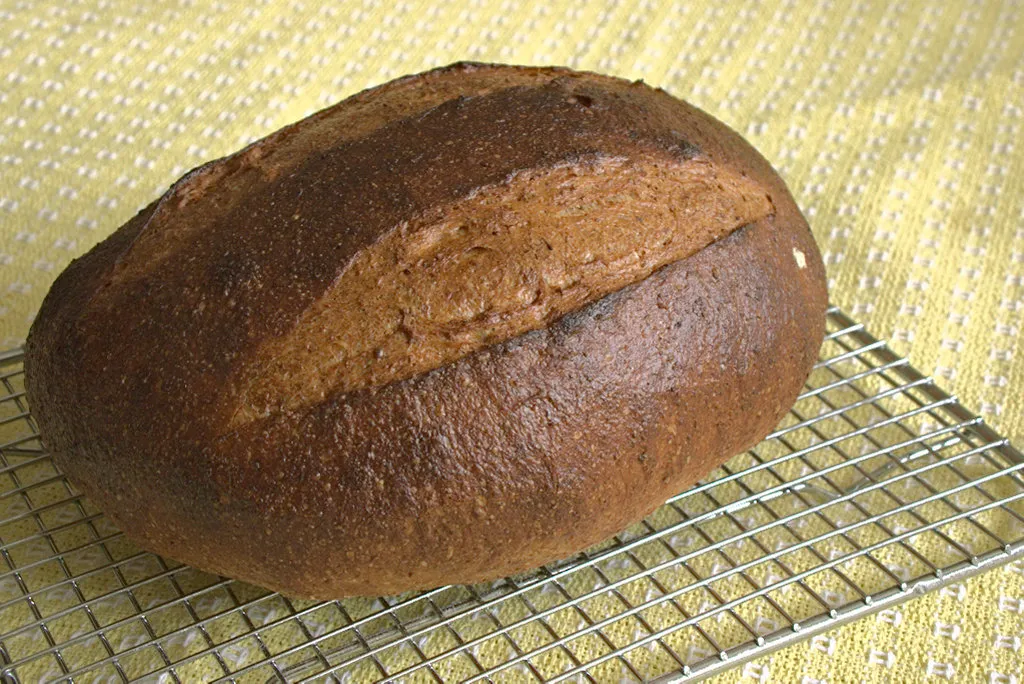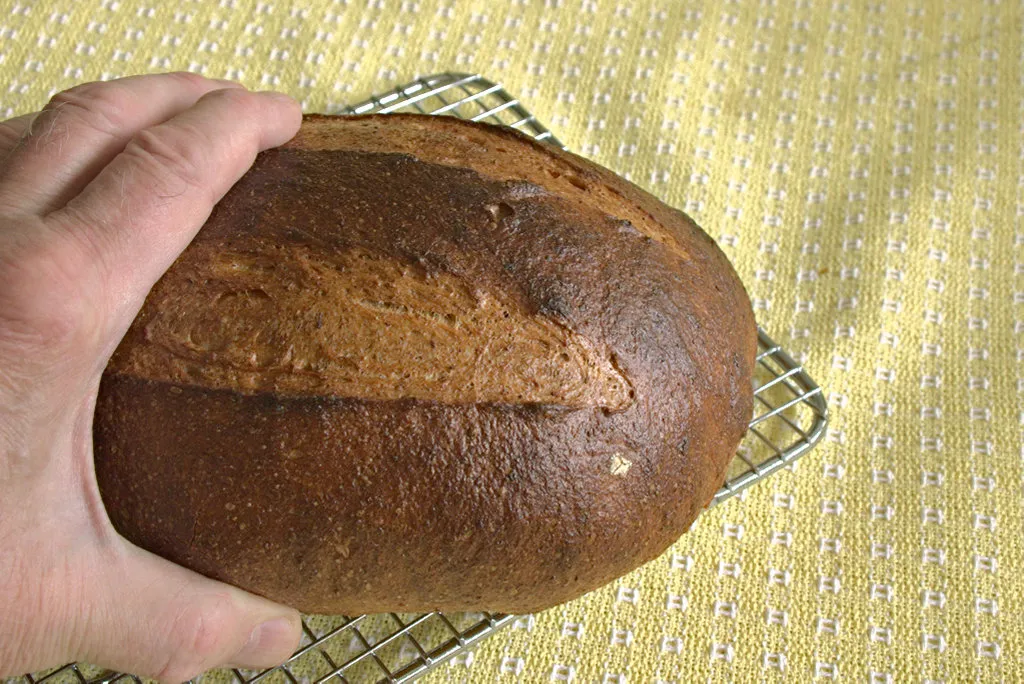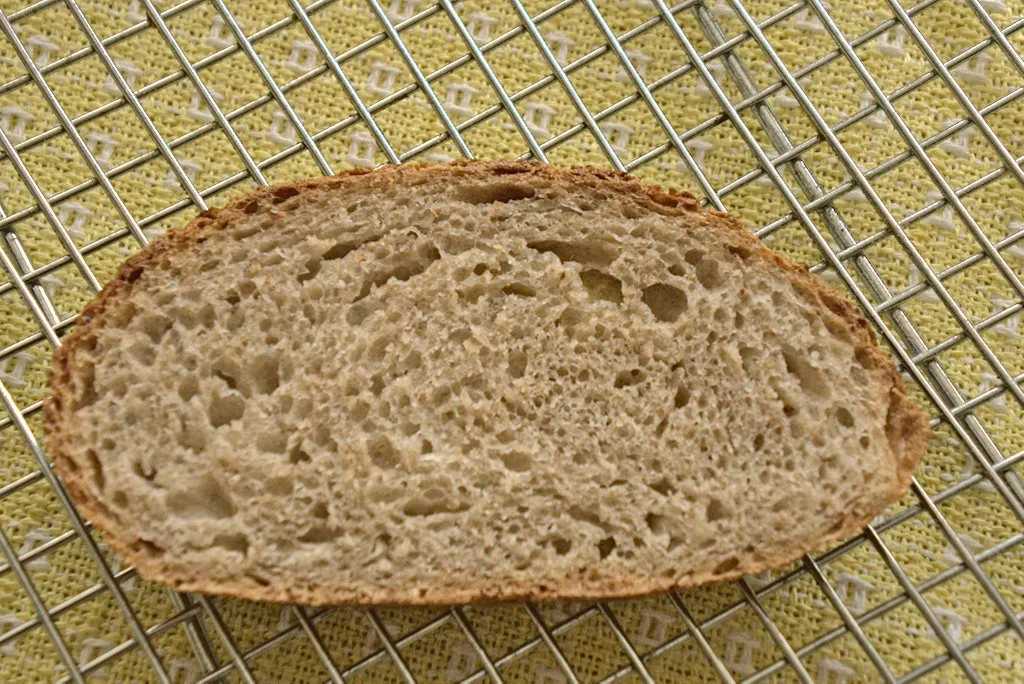
For my first foray into baking with spelt flour, I made a loaf with 50% spelt, 50% bread flour. The spelt was stone-ground from a local water mill. Using a kitchen sifter I was able to sift out a little bran, which I scalded with water and left overnight. The amount of extraction was only around 6 - 7%, though. The bread flour was King Arthur's. The total amount of flour exclusive of the starter was 420g plus a few more for the bran scald.
To try to counter the lower amount or grade of gluten that spelt is reputed to have, I used a little more salt than I usually would, a lightly lower hydration - 70% including the starter ingredients - and more starter (35%) than I otherwise would have to get a faster fermentation. I also included the starter and salt in the initial mix. This was a hand mix, just enough to hydrate the flour and mix everything reasonably uniformly.
After a rest of 30 minutes, I kneaded and stretched the dough briefly, and then did two more S&F sessions after 30 and 45 minutes. For this last one, the dough had enough extensibility that I stretched it between my hands so I could pull it out further than I could have using coil folds in its tub.
The dough had doubled in 4 hours, and I shaped it without needing a preform. I stretched it and worked it enough that it seemed to have enough elasticity to proof free-form, and I shaped the dough into a batarde loaf. After proofing covered for 45 minutes, I slashed it and started the bake with initial steam.
You can see from the photos that this all worked very well and produced an attractive, well risen loaf with a reasonably open crumb for this kind of flour. The crumb seems a little soft. and it has a good flavor subtly richer than ordinary whole wheat usually does.


- tpassin's Blog
- Log in or register to post comments
What a nice crust and crumb. That mahogany tone must add some flavor, and the crumb looks soft. I have some spelt that now needs to be used. Thanks for your post.
Ted
Thanks, Ted,
Yes, the crust is adding flavor and mouth feel in a good proportion. The crust is somewhat crispy but it doesn't shatter into large flakes when you bite into it.
I proofed it covered with a sheet of plastic wrap, and created a burst of steam right after I put the loaf into the oven. So the surface would have been a little moister than if it had been proofed in a cloth-lined banneton. That would have caused the sheen and helped with the deep color.
TomP
That’s a beautiful looking loaf and a great crumb for 50% spelt.
Putting together a recipe from your description, I have some questions.
Would the little extra salt be along the lines of 2.2%? Or perhaps 2%?
Was the second stretch-and-fold done 45 minutes after the first one? (As opposed to 45 minutes after the start of the bulk fermentation.)
What temperature was the oven?
How long did the bake take?
This will be one of my upcoming bakes, and I want to nail down these details first. Thanks in advance.
Ted
- Salt: I used 9g (1.8%). That's still a little light if you include the flour in the 100% hydration starter, and I might increase it a bit next time. 2.2% would probably work well.
- Yes, the 2nd S&F was done about 45 minutes after the first one. There's no need to be picky about the exact times. It's more about how the dough looks and feels, and when it's convenient for you. It might or might not need another S&F. My loaf did not.
- Oven temps: I started out at 435 deg F, but I realized that was too high for the size of the loaf so I turned it down to 400 after the first 20 minutes. I bake with a baking steel.
- Bake time: 38 minutes total. For this size loaf, I suggest baking at 405 - 410 deg F for 39 - 40 minutes. But your oven is going to be different from mine, so keep a check on it.
Thanks for the details. I will send you info when I do my bake.
Good luck! We'll be eager to hear.